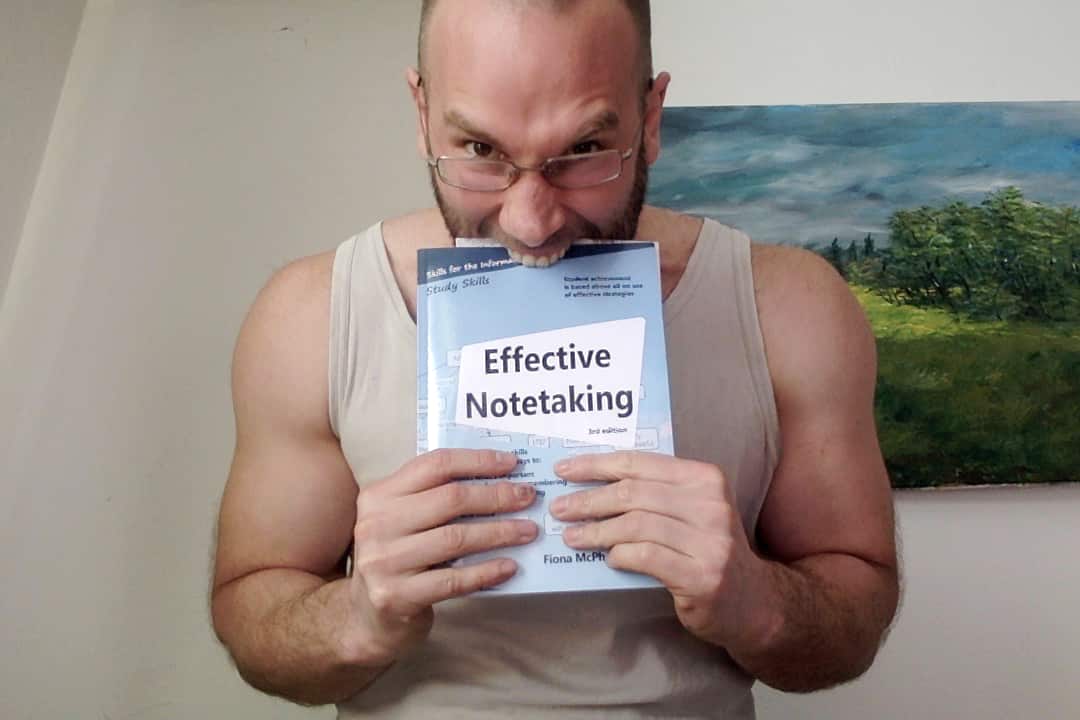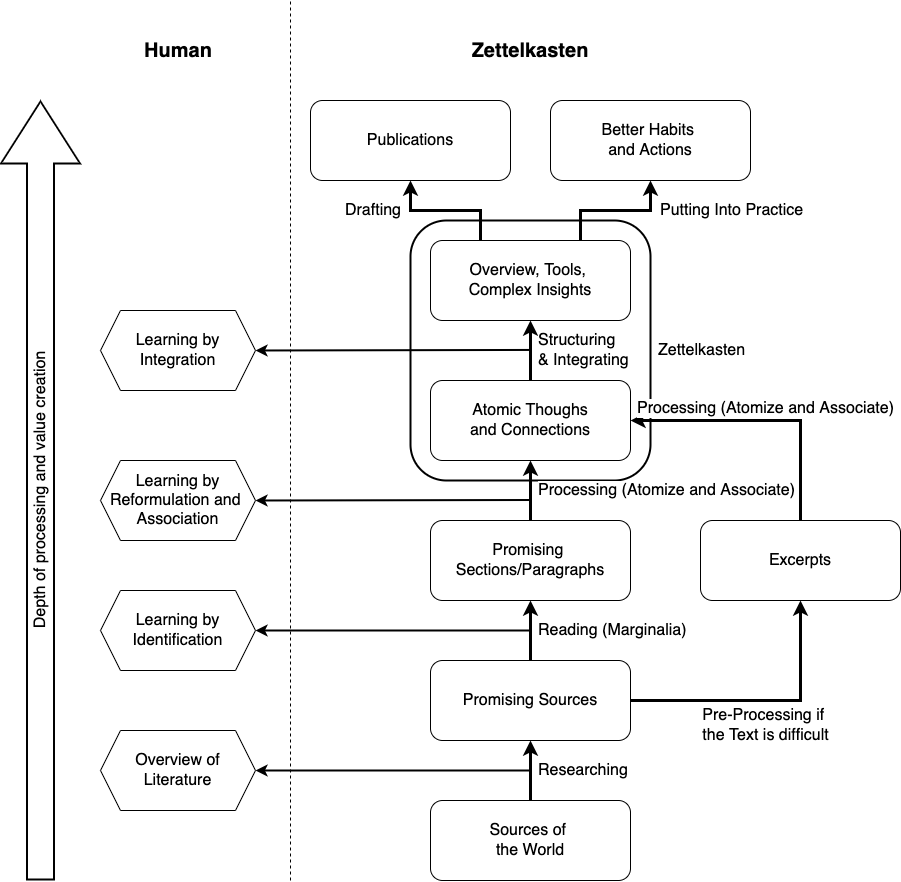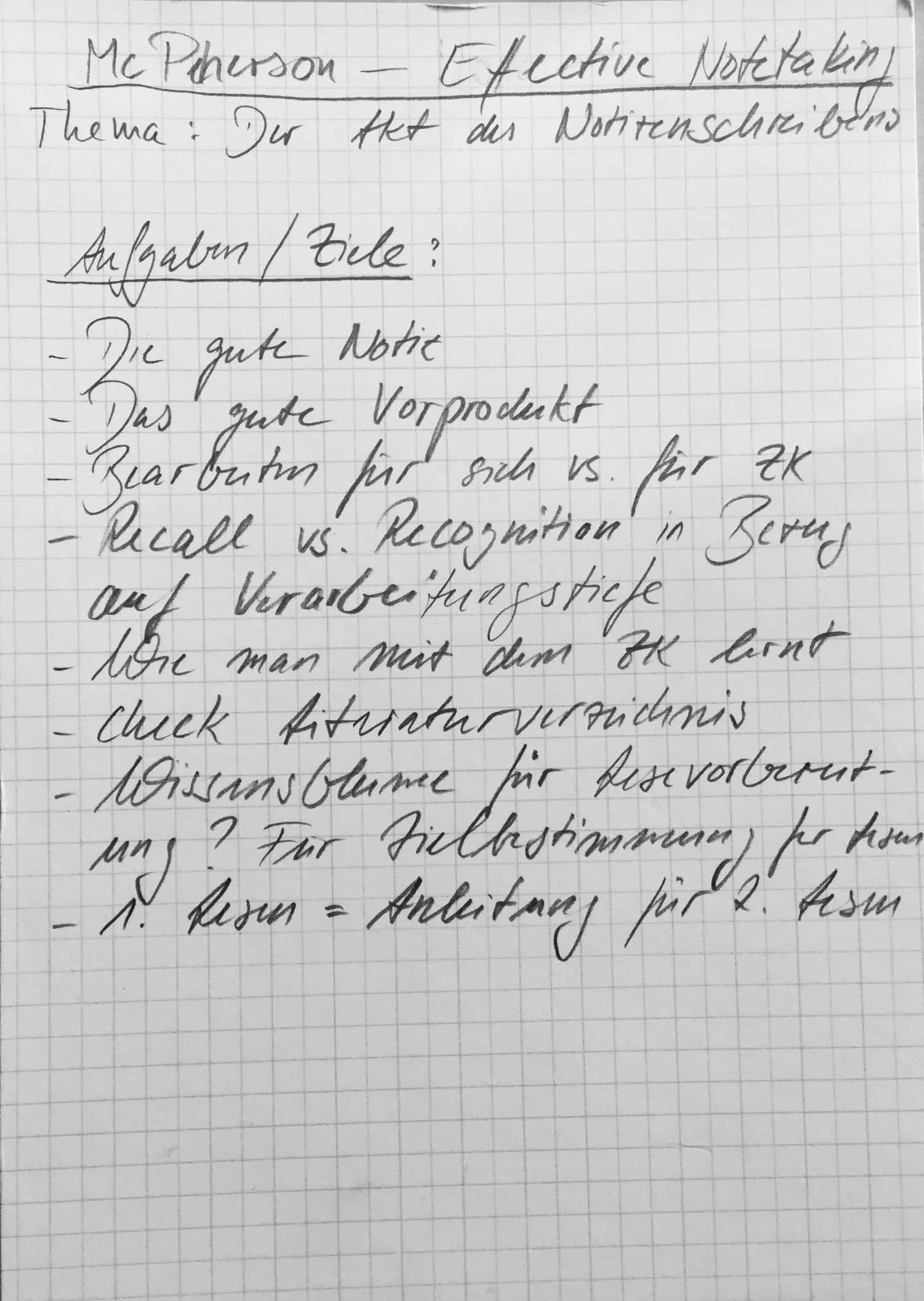Field Report #5: How I Prepare Reading and Processing Effective Notetaking by Fiona McPherson

When you process a book into your Zettelkasten you should prepare both the book and your Zettelkasten. The following is exactly how I prepared Effective Notetaking by Fiona McPherson:1
I set clear expectations and why I am reading a book. I don’t read for joy, although I enjoy good books almost regardless of their topic. The usefulness of the book comes first. I expect Effective Notetaking to teach me on how to use note-taking to achieve specific goals. So I expect a combination of theoretical and practical knowledge.
I am reading the book for two reasons:
- Improve my knowledge on note-taking as a topic and – even more important – improve my skillset.
- Improve the Zettelkasten Method by integrating the above into the overall model.
I didn’t want to read yet another theoretical book by an educationalist. So I reviewed the bibliography to see what the ratio of articles to books is. Many books and few articles is a sign that the book is not based on primary research. Luckily, the ratio was satisfying and there were no red flags that popped up when I skimmed the titles. (If you want to have a glimpse into the reason behind this read Layers of Evidence).
I review the table of content to generate a mental map. Since the book is on note-taking, I am very familiar with the topic. I needed just 2 minutes for this step. The book is separated into three main parts:
- Selecting strategies
- Connecting strategies
- Application
Awesome! It mirrors the Zettelkasten Method – which is no coincidence since I make use of general patterns of knowledge and information processing.
I think this priming step is overemphasised by many. Reading a book takes a couple of hours in total if you are in an optimal reading environment. But the reality is that the reading time is broken up into lots of fragments unless you have the luxury (and focus) to read many hours at a time. So the reading could be spread out over weeks. By that time, you will forget most of your mental maps anyway.
This is the reason why I personally don’t read many book introductions. I never benefited from reading them, nor did I encounter valid empirical research that shows benefits of reading introductions in a real world scenario.
I come up with an hypothesis what the core idea of the book is. The book is not about good atomic notes. It is about the effects of various ways of note-taking, the process of note-taking.
I plan what I will use the book for within my Zettelkasten. I know that I will process the book into my Zettelkasten. It’d be short-sighted if I wouldn’t take this into consideration. I give my future self ideas and tasks what to do when he will process the book. Some are set initially, but most will be added during the first reading. I don’t plan too much and instead react to the reading experience.
Then I prepare a bookmark for the book. It is structured like this:
- The title of the book.
- The core idea
- Tasks
It looked like this when I was on page 151 (when I wrote this article; to the right, there is an English translation):
My latest quirk is to use proper cards instead of ordinary slips of paper for that. But normal paper works fine. I have a stack of DIN A5 cards which I cut to a smaller size if the book is smaller than this format.
Bonus: How to Read Effective Notetaking to Improve Your Personal Iteration of the Zettelkasten Method
This is the current flow diagram of the Zettelkasten Method for the upcoming book.

And this is the table of content of Effective Notetaking:
1. Introduction
2. Making note-taking an effective strategy
PART I: Selection strategies
3. Highlighting important information
4. Headings highlight structure
5. Summaries
6. Graphic summaries
PART II: Connection strategies
7. Understanding connection
8. Elaboration strategies
9. Concept maps
PART III: Applying your strategies
10. Taking notes in lectures
11. Using your notes
12. Learning style and individual differences
13. Choosing the right strategy
I mapped the various sections of the book to the flow diagram to show you how my model of the Zettelkasten Method will absorb what I will find in the book:
- Research
- Reading and Learning by Identification
- 3. Highlighting important information
- 4. Headings highlight structure
- 10. making notes in lectures
- Excerpts and Learning by Reformulation and Association
- 2. Making note-taking an effective strategy
- 5. Summaries
- 6. Graphic summaries
- 7. Understanding connection
- 8. Elaboration strategies
- 9. Concept maps
- Processing and by Reformulation and Association
- 2. Making note-taking an effective strategy
- 7. Understanding connection
- 8. Elaboration strategies
- 9 .Concept maps
- Structuring, Integrating and Learning by Integrating
- 2. Making note-taking an effective strategy
- 8. Elaboration strategies
- Drafting
- Putting into practice
Some sections will be absorbed by a peripheral model:
- Use Cases and User Case
- 11. Using your notes
- 12. Learning style
- 13. Choosing the right strategy
My hypothesis is that the differentiation between selecting and connecting mirrors the two steps of the Barbell Method of Reading.
-
Affiliate link. I earn a little % commission when you use my link to purchase, but you don’t pay extra. ↩
